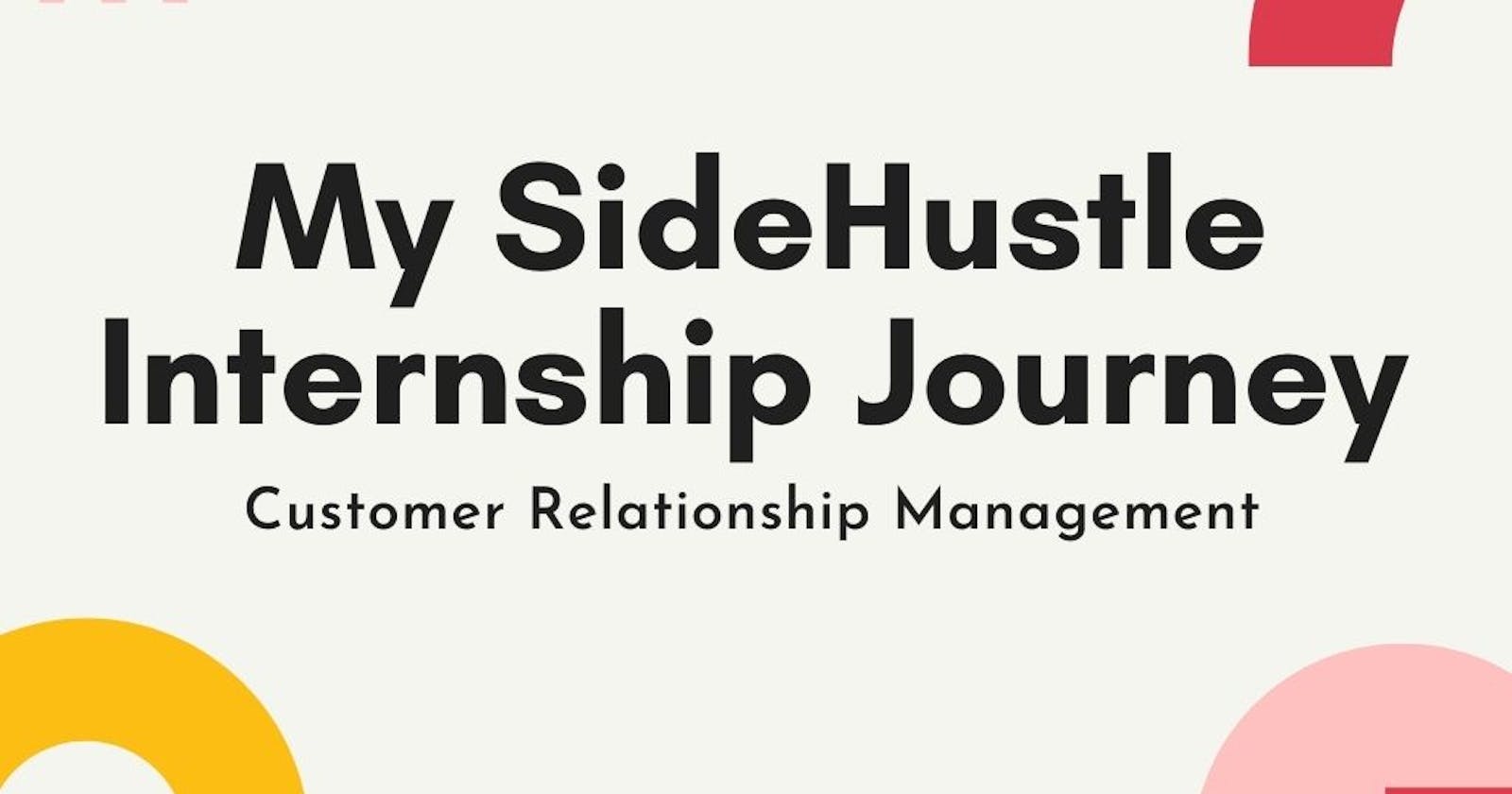Hello there😎, this piece will be taking a different turn because I'll be writing about something different from coding😘.
Early in March, I got a link to register for a free Internship with SideHustle Ng. They offer a lot of tracks ranging from Front End Development, Content Creation, Microsoft Suite, Public Speaking etc.
However, before that time, I got accepted to volunteer as a Technical Support Personnel at YouVersion.
Thereafter, I choose Customer Relationship Management as my track for the Internship because I didn't just want to be able to provide technical solutions alone but with empathy and customer understanding. The journey began on the 21st of June, 2021 with an onboarding class. I followed with a 4 -week intensive training on Customer Relationship Management.
I had amazing tutors who were always ready to answer my questions, they also treated me like a customer, thereby making it easy to learn. Every week we had tasks and quizzes based on our lessons and they were graded promptly.
Here's a teaser of the things I learnt all through this awesome journey:
Who is a Customer?
A customer is an individual or group of individuals that fit into the solution you provide and accept your product or service offered by you or your company in exchange for money or any other agreed items.
Types Of Customers
According to research by customer analysts, there are different types of customers, but I love using these 3 types because it's common with our daily life in Africa, Nigeria.
The three categories are:
- The assertive customer
- The irate customer
- The passive customer
ASSERTIVE CUSTOMERS The assertive customers are those that have a good idea of what they want and how it should be done politely and calmly without being aggressive. You need to be careful with your choice of language with such customers because if offended, they can make a report of your misconduct.
PASSIVE CUSTOMERS The passive customers are those that do not have enough knowledge of what they are going for. These customers may not even know when they are at fault until you give them an explanation. Even after explaining to them, they will even express intent of leaving for another competitor. Such customers have a greater tendency of leaving your brand to another competitor. Hence you need to give them proper education and follow up on them.
IRATE CUSTOMERS Irate customers are customers that will unload their anger on you. They may not even allow you to make a welcome note or greetings. You should know that these customers are unhappy about a problem and want it resolved. Some service professionals even believe that the same set of customers are the best set of customers to have because they must talk when they see a problem, unlike a passive customer that will just keep quiet and switch to another competitor. And sometimes if you lose an irate customer, it will be hard for such customer to be recovered.
How to treat an Irate Customer
- Remain calm.
- Listen attentively to the customer.
- Repeat back what the customers have said.
- Thank the customer for bringing the issue to your attention.
- Use available applications to verify the claims of the customer.
- Explain the steps you will take to resolve the problem.
- If needed, create a time to follow up with them.
- Be clear and be sincere with them regarding the process of resolving the issue. If they want an actual time, give them the standard company resolution time frame. Don't promise what is beyond your reach.
Professional Qualities in Customer Service.
Customers will always relate their customer service experience. They will grade your customer service skills during each transaction whether you know it or not. As professionals who constantly deal with customers (inside and outside the company) there is the need to strive for certain qualities to help you answer customer needs.
- Friendliness
- Empathy
- Fairness
- Control
- Information
- Product knowledge
How to use social media for customer service
- Build authentic customer relationships in a timely fashion.
- Use hashtags strategically.
- Focus on creating a customer advocate base.
- Be responsive.
- Be available.
- Take public conversations private.
- Set up a separate handle for customer service support.
What is Customer Engagement?
Customer Engagement is the emotional connection between a customer and a brand. Highly engaged customers buy more, promote more, and demonstrate more loyalty. Providing a high-quality customer experience is an important component of your customer engagement strategy.
Types of customer engagement.
- Contextual Engagement
- Engagement of Convenience
- Emotional Engagement
- Social Engagement
Conclusion
As I round up my internship, I must say it has been an overwhelming ride for me with so much important information. I have notes to study and work to practice what I learn every day.
Dear reader, I encourage you to sign up for the next cohort in October for SideHustle here and select any track of your choice. I bet it's going to be a beautiful journey for you like mine.
I wrote this article in appreciation to SideHustle Ng for this beautiful opportunity to sharpen my customer relationship management skills for free with daily practical examples.
Did I mention that there are incentives too?🤩 Check it out here .
Thanks for reading🤝
